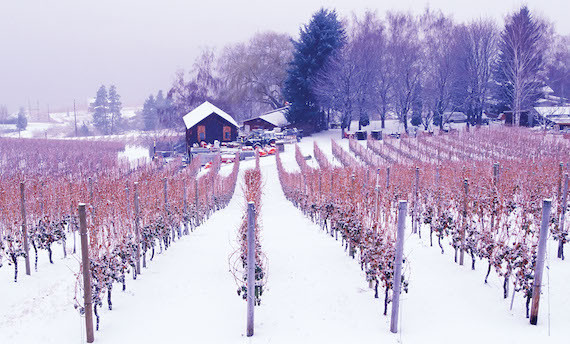“China has driven the duty free sector for all categories. If you visit a London airport, for example, there are Chinese-speaking staff members and we have a special relationship with China Duty Free Group.”
Dufour says the winery exports about 65% of its production and the remaining 35% of local consumption isn’t a growing base. This could begin to change now that Inniskillin is Canadian-owned once again, but right now the Chinese are the focus point.
DOMESTIC BOOM
When ice wine first gained popularity in China in the early noughties there was an issue with counterfeit products. Brands lost out to fake wines, which stifled exports until the market began to mature.
When counterfeit ice wine was at its most prevalent, the Chinese government said the country’s domestic wine producers were expanding by around 30% a year. By 2017 professor Zhan Jicheng of China Agricultural University estimated that the country was producing 3,000 tonnes of ice wines each year and today there are not only several different ice wine regions in China, but regulations too.
According to a report from B2B wine marketplace Vinex, Chinese regulations suggest that ice wine should be made from grapes naturally frozen on vines with no chaptalisation. The alcohol levels should be 9-14% abv and sugar levels above 125g per litre.
However, so far Hengren in Liaoning province, which is China’s biggest ice wine region, producing 1,400 tonnes of ice wine a year, is currently the only region with established geographic recognition and it stipulates a higher sugar level of at least 150g per litre. The Vinex report also says that central government and local producers are now pushing to implement official rules in more locations.
The scale of production growth is also breathtaking. Further north in the Jilin province is Ji’an city, which now produces one-sixth of the world’s total ice wine volume, according to GMA Marketing To China. But that’s not even the biggest region by volume. Liaoning province’s Hengren is the largest producer with 1,400 tonnes of ice wine a year and Heilongjiang, the country’s most northern province which borders with Russia, is home to another of China’s main ice wine regions in Dongning city, where there are reportedly around 333ha of vineyards and five local wineries.
The ice wine industry in China has not only developed rapidly in volume, but production techniques too. In Jilin province, a local variety of Amur grape was developed by the Chinese Academy of Agricultural Sciences in 2008 called Beibinghong. The advantage of this variety is that it can ferment in ice-cold temperatures without having to macerate the skins, and now Chinese producers are ramping up their efforts to grow their brand presence.
Kong Qingsen, who operates a winery in Ji’an, told Asia Times: “From 2016, the city has held an ice wine festival every year, attracting tourists and wine connoisseurs alike. We plan to develop chateau tourism so that more consumers can enjoy the taste of sweet ice wine and the beauty of the Yalu River.”




